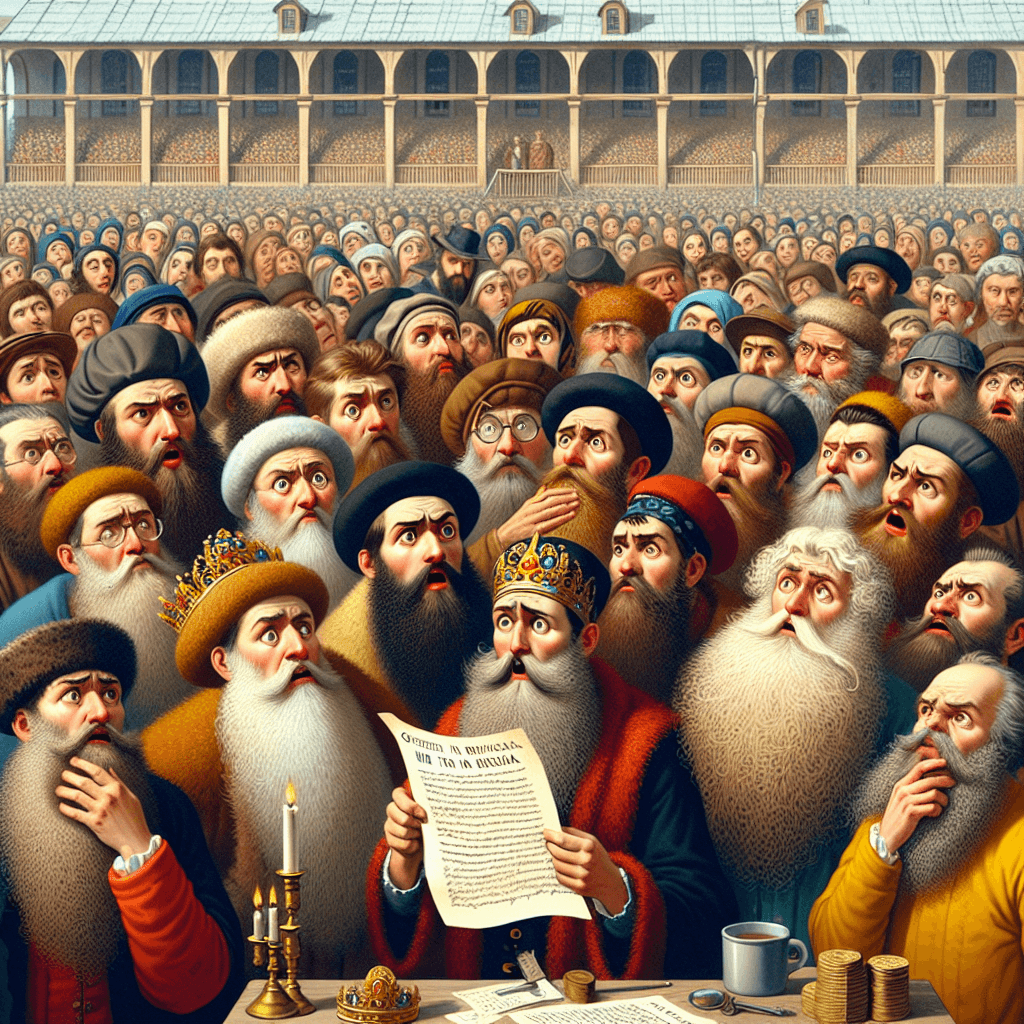Shave the Past: Why Russia Once Imposed a Tax on Beards
Imagine paying a government levy simply for sporting a beard. For Russians under Tsar Peter the Great, this was a reality, and this peculiar tax was a key part of a radical plan to modernize a nation.


Too Long; Didn't Read
In the late 17th and early 18th centuries, Russia's Peter the Great taxed beards to force men to adopt clean-shaven, Western European styles as part of his sweeping modernization efforts.
Shave the Past: Why Did Russia Once Impose a Tax Specifically on Growing Beards?
Imagine reaching into your wallet, not for your morning coffee, but to pay a government levy simply for sporting a beard. It sounds like a satirical headline, but for Russians under Tsar Peter the Great, it was a reality. In the late 17th and early 18th centuries, Russia implemented a peculiar and often resented "beard tax." But why target facial hair? This seemingly odd policy was deeply intertwined with one ruler's ambitious vision to fundamentally reshape his nation. This post explores the historical context and primary motivations behind Russia's unique tax on beards.
The Modernizing Tsar: Peter the Great's Vision
To understand the beard tax, we must first understand Tsar Peter I, better known as Peter the Great (reigned 1682-1725). Peter was obsessed with transforming Russia from a relatively isolated, traditionalist realm into a major European power. His "Grand Embassy" tour of Western Europe (1697-1698) profoundly impacted him. He witnessed firsthand the technological advancements, military prowess, cultural norms, and even the fashion sensibilities of nations like Holland and England.
Upon his return, Peter initiated a sweeping series of reforms aimed at modernizing Russia along Western lines. This included reorganizing the army and navy, establishing new educational institutions, reforming the administrative system, and even changing the calendar and alphabet. Critically, he also sought to change the very appearance of his subjects, particularly the elite.
Why Tax Beards? More Than Just Aesthetics
The beard tax, formally introduced in 1698 shortly after Peter's return from Europe, wasn't merely a stylistic preference enforced by law. It carried significant symbolic weight and served multiple purposes within Peter's broader agenda.
Symbolism: Old Russia vs. New Europe
- Traditional Significance: In traditional Russian society, especially among the Orthodox faithful and the old nobility (Boyars), a beard was more than just facial hair. It was often viewed as a symbol of piety, masculinity, and adherence to revered traditions. The Russian Orthodox Church, in particular, held beards in high esteem, sometimes seeing shaving as foreign or even heretical.
- Western Contrast: In the courts and cities of Western Europe that Peter admired, clean-shaven faces were the norm among the aristocracy and the emerging professional classes. To Peter, the smooth chin represented European enlightenment, rationality, and modernity.
- Breaking Tradition: By attacking the beard, Peter was symbolically attacking the "old ways" he associated with Russia's perceived backwardness. It was a visible, personal way to force a break with the past and signal allegiance to his new, Western-oriented direction.
A Tool for Westernization
The tax was a coercive measure designed to compel Russians, starting with his courtiers and officials, to adopt European appearances. Peter famously, and sometimes forcibly, shaved the beards of his nobles himself upon his return from Europe. The tax provided a more systematic, albeit resented, method: conform to the Western look or pay a penalty. This was part of a package of changes that included mandating Western-style clothing, banning traditional Russian robes (kaftans) at court, and encouraging European social customs.
Revenue (A Secondary Benefit)
While the primary driver was socio-cultural transformation, the tax did generate income for the state treasury. Peter's ambitious reforms, extensive wars (notably the Great Northern War against Sweden), and the construction of his new capital, St. Petersburg, placed enormous strain on Russia's finances. The beard tax, while perhaps not a primary revenue stream, contributed funds. Those who wished to keep their beards had to pay, turning their traditionalism into a source of income for the modernizing state.
How the Beard Tax Worked
The implementation wasn't uniform:
- Differential Rates: The amount of tax varied depending on the individual's social status. Nobles, officials, merchants, and wealthier townspeople paid higher rates. Peasants were largely exempt unless they entered a taxed city with a beard.
- The Beard Token: Upon payment, men were issued a special copper or silver token, sometimes called a "beard kopek." This served as proof of payment and permission to retain one's beard. These tokens often bore inscriptions like "The beard is a superfluous burden" and "Money taken."
- Enforcement: Enforcement could be harsh. Those who refused to pay or conform might face fines or even forcible public shaving by guards or officials. This naturally led to significant resistance, especially from religious groups like the Old Believers, who saw shaving as a violation of their faith.
Conclusion: A Symbol of Forced Change
The Russian beard tax, lasting in various forms for several decades after Peter's initial decree, stands as a fascinating historical example of state-driven social engineering. It wasn't merely about fashion; it was a potent symbol wielded by Peter the Great in his relentless campaign to westernize Russia and break the hold of traditions he viewed as obstacles to progress. While generating some revenue, its core purpose was cultural transformation – forcing subjects to visually align with the Tsar's vision for a modern, Europeanized Russia. This peculiar tax serves as a reminder that throughout history, even personal choices like grooming can become battlegrounds for cultural identity and national direction.


